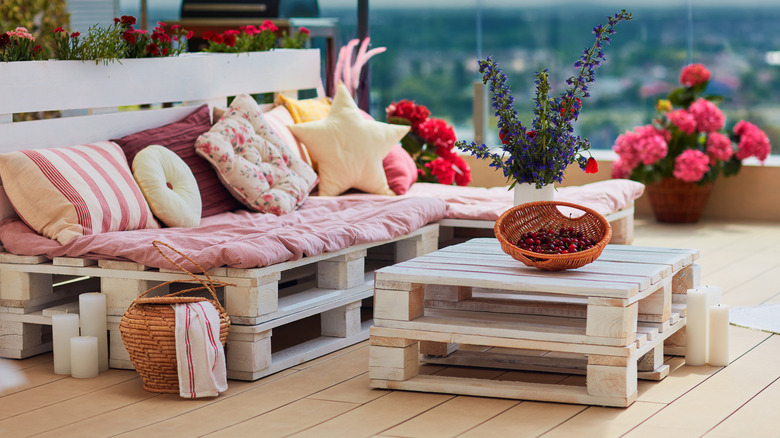Is It Really Cheaper To Build Your Own Patio Furniture (Tips For Saving Money)
Adding a patio to your yard gives you a custom-made area for relaxing or dining with family and friends, and it can also increase the value of your home by as much as 10 percent. There are lots of trendy design ideas for your perfect outdoor space and a seemingly endless choice when it comes to patio furniture.
Unfortunately, much of it can be quite expensive, so it's no surprise that DIY outdoor furniture projects are popular. These can be as simple as nailing two pallets together and adding a couple of cushions. On the other hand, you might want something more upmarket and decide to build a complete matching patio set of chairs, side tables, benches, and a dining table.
Of course, whatever you do will demand time, effort, and in many cases store-bought tools and materials. Costs can soon add up, so there might come a point when you question whether it really is cheaper to build your patio furniture yourself. It certainly can be, but much will depend on your abilities (or determination), the equipment you own, and the type of furniture you plan to create. If your ambitions go beyond repurposing old pallets, it's worth knowing the tips that will save you money. So let's look at what might help.
How to cut costs and make great patio furniture
With a little creativity, you can turn all kinds of discarded items into workable, rustic patio furniture, and there are a host of websites online that offer ideas. However, if you want something coordinated, you'll need plans (which you can often get for free), tools, and lumber.
You don't need a huge toolkit, but a drill/driver and a circular saw are among the must-buy power tools for first-time homeowners for good reason: they can help you achieve an enormous variety of tasks. In fact, a lot of patio furniture can be made with just these two devices and a box of screws. Okay, you might want to add a sander, but if the budget is limited, you can sand by hand (it's easier if you wrap the sandpaper around a scrap block of wood).
If you're going to be doing a lot of DIY, then investing in power tools from leading brands like DeWalt and Milwaukee can pay off in the long run. If you're only tackling a couple of projects, then brands like Black+Decker, Craftsman, Ryobi, Skil, and Harbor Freight have budget-friendly alternatives. Also, bear in mind that while everybody loves cordless tools for their convenience, corded models can be considerably cheaper and do an equally good job.
For patio furniture, cheap lumber may be false economy
Down at your local Home Depot, Lowe's, or similar DIY store, you'll find a wide variety of dimensioned lumber that can be very affordable and looks ideal for making patio furniture. Green or undried lumber is usually cheapest but has high moisture content, so it will probably twist and warp as it dries. That's not what you want for furniture. Kiln-dried lumber costs a bit more but is much more stable.
However, before you grab some of that low-cost kiln-dried pine, it's important to realize it will need to be protected from the weather, and any sealer or paint will probably need to be reapplied at least once a year to prevent mildew and rot. For a little extra, you can buy pressure-treated lumber that offers long-term protection (though you still might want to stain it for a better look). If you really want to up your game, go for western red cedar. It usually has beautiful grain and is naturally resistant to bugs and decay.
At the end of the day, it is possible to buy budget-friendly patio furniture, but is it durable or a waste of money? At the other end of the scale, you could easily spend a couple of thousand dollars, and you can certainly build your own patio furniture for less than that. You'll also have something bespoke and a sense of satisfaction that money can't buy.


